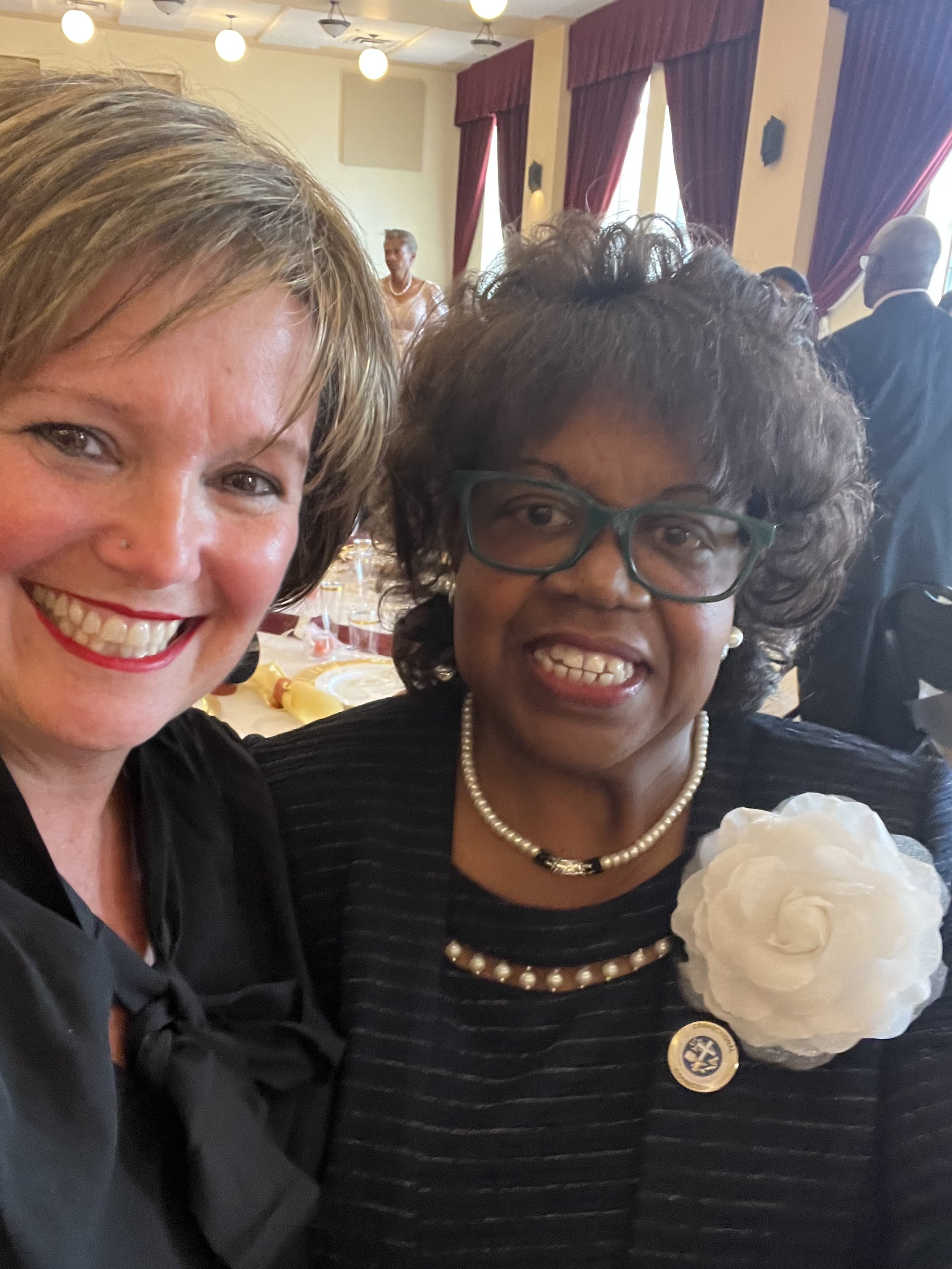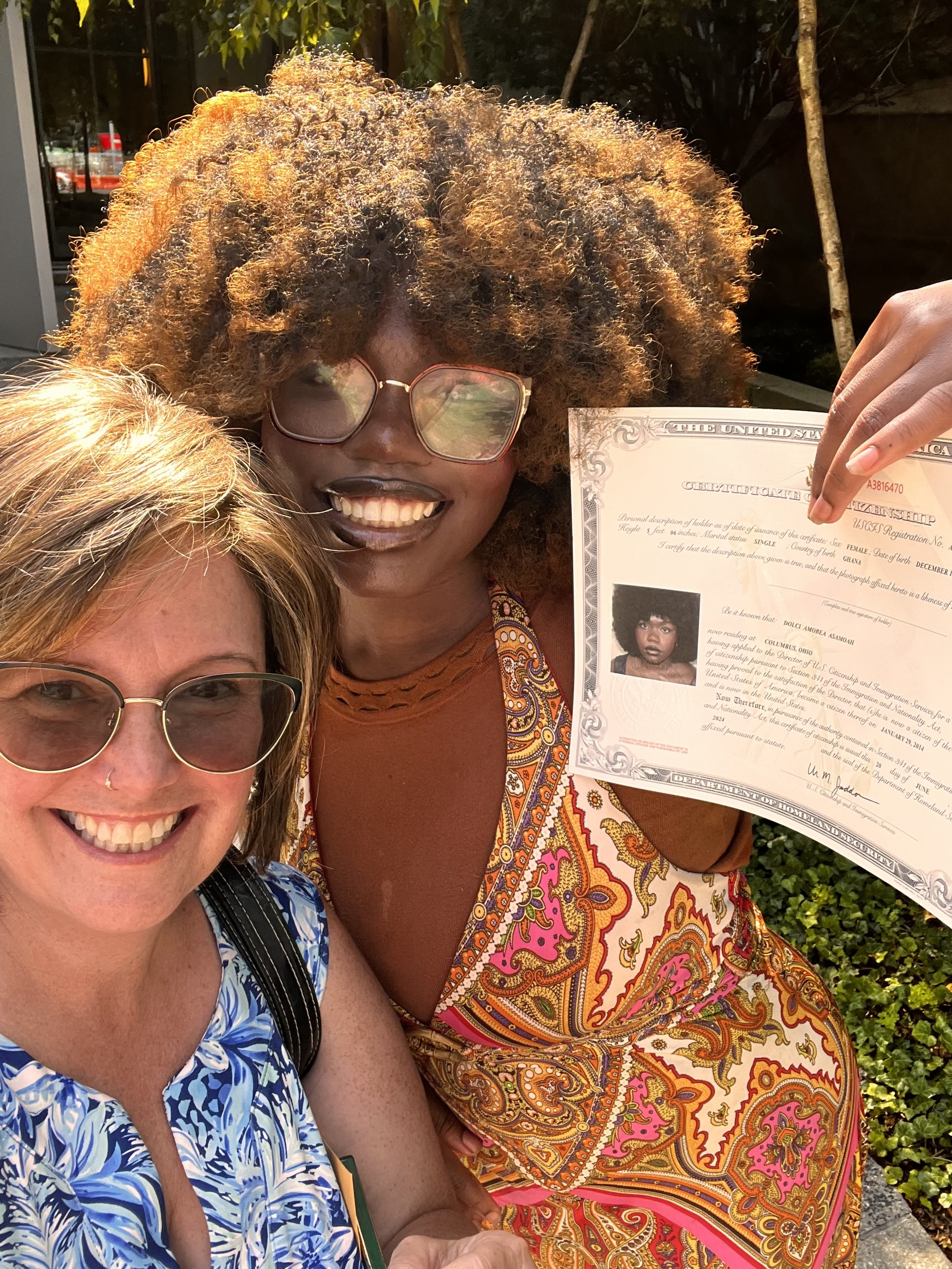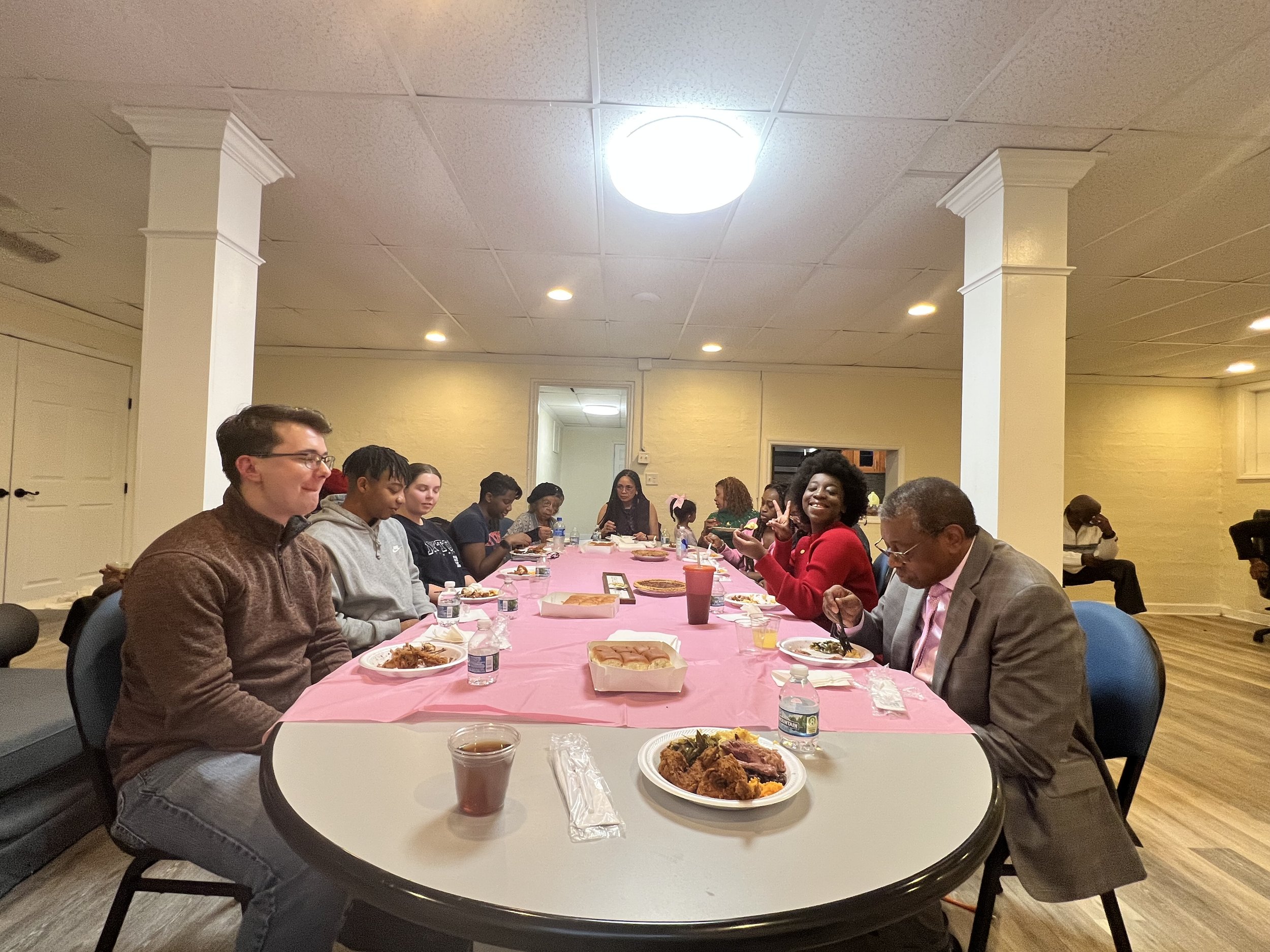Meet us in the Sanctuary Sundays - 11AM
Visitor’s Information!
You are welcome here!
HOLY TRINITY is a small-membership congregation with a rich history and inspiring future. The church is nestled within Payne Theological Seminary, gathering weekly in the beautiful “Chapel of the Living Savior”. Once a congregation whose specific ministry was to students, faculty and staff of Wilberforce University and Central State University, Holy Trinity has grown into a community congregation, open to all who have a desire to deepen their faith.
*Photo: Closing Chapel Worship, Payne Seminary Intensive
Plan your visit to Holy Trinity
To ease the nervousness of arriving somewhere new, we’ve added a few tips on what to expect. If you have other questions, please use our “connect” page to reach out!
-
You are welcome to park in any available spot in the parking lot.
Come in the front doors of Payne Seminary and you will immediately see the Chapel of the Living Savior in front of you. The front entrance is accessible—no stairs are required for entering the building.
Please complete a connection card upon entering and give it to an usher or greeter.
Masks are recommended and available at the door, if desired.
-
There is a ramp leading up to the front door of the seminary . There are no steps to enter the sanctuary. The restrooms are accessible.
The women’s restroom is down the hall to the left, men’s are to the right.
There is also a water cooler in the hallway—please help yourself. You are welcome to bring your beverage in a closed container into the sanctuary.
-
Dress in any manner that is comfortable to you—we do not have a formal “dress code”. Many dress in business casual, some in full suits, others comfortably casual. Just be comfortable.
-
Holy Trinity worships in liturgical style, meaning, the worship begins with the doxology and a call to worship (standing if you are able). There are sometimes other call-and-response moments such as the scripture reading.
At this time, Holy Trinity has neither a choir nor musician. The congregation sings along with intentionally chosen video selections.
We believe each person should have the freedom of expression in worship. Whether you are listening contemplatively, nodding, saying “amen”, raising hands, tapping feet, or just at ease in the Spirit, your expressions are welcome.
It is unlikely you will be asked to touch your neighbor, say something to your neighbor, or instructed in how to praise.
-
Holy communion is typically celebrated on the first Sunday of the month. We believe that the elements of bread (wafer) and wine (juice) are symbolic of the suffering and obedience of Jesus. We practice an open table—all are welcome regardless of church or religious affiliation. Children are also welcome. After prayers and collects, we come to the altar “filling the table” kneeling if your body allows. Those unable to come to the altar will be served in the pews—simply signal an usher.
-
We love the littles! Our worship is intergenerational—don’t worry at all if your little one moves about or makes some noise. There is a basket with crayons and color sheets and a few quiet toys in the back of the sanctuary—Feel free to use and return after worship. During the worship there will be “children’s moments”. Children are invited to meet the pastor in the front for a song or story time and a special treat. If you feel like you need to step out, there is a classroom you can use for privacy, if desired. If your child needs a snack or drink during church, food/drink is allowed in the sanctuary with supervision and clean up (of course!).
-
The African Methodist Episcopal Church ( A.M.E. Church for short), is Methodist in terms of its basic doctrine and order of worship.
It was born, through adversity, of the Methodist church and to this day does not differ in any major way from what all Methodists believe.
The split from the main branch of the Methodist Church was not a result of doctrinal differences but rather the result of a time period that was marked by man’s intolerance of his fellow man, based on the color of his skin. It was a time of slavery, oppression and the dehumanization of people of African descent and many of these un-Christian practices were brought into the church, forcing Richard Allen and a group of fellow worshippers of color to form a splinter denomination of the Methodist Church.
To find the basic foundations of the beliefs of the African Methodist Episcopal Church, you need look no further than The Apostles’ Creed and The Twenty Five Articles of Religion:
The beautiful sanctuary—a sacred space for prayer, praise and worship.
A nice get-away just down the road!
While in Wilberforce, OH you will feel the serenity of being out of the hustle and bustle of the city. The slower pace, open sky, dense trees and open land are peaceful reminders of the Great Creator’s handiwork. We are just 25 minutes from downtown Dayton, 15 minutes from Fairfield Commons area, 15 minutes from Yellow Springs, 10 minutes from Cedarville, 10 minutes from Xenia






































































































































